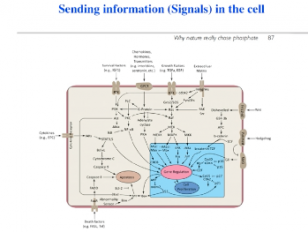Multiscale Simulations of the Functions of Biological Molecules

Presenter: Arieh Warshel
Published: July 2014
Age: 18-22 and upwards
Views: 2927 views
Tags: enzyme;reaction
Type: Lectures
Source/institution: Lindau-Nobel
Watch now
Despite enormous advances in structural studies of biological systems we are frequently left without a clear structure-function correlation and cannot fully describe how different systems actually work. This introduces a major challenge for computer modeling approaches that are aimed at a realistic simulation of biological functions. The unresolved questions range from the elucidation of the basis for enzyme action to the understanding of the directional motion of complex molecular motors. Here we review progress in simulating biological functions, starting with the early stages of the field and the development of QM/MM approaches for simulations of enzymatic reactions. We provide overwhelming support for the idea that enzyme catalysis is due to electrostatic preorganization and then move to the renormalization approaches aimed at modeling long-time processes, demonstrating that dynamical effects cannot change the rate of the chemical steps in enzymes. Next we describe the use of our electrostatic augmented coarse-grained (CG) model and the renormalization method to simulate the action of different challenging complex systems. It is shown that our CG model produces, for the first time, realistic landscapes for vectorial process such as the actions of F1 ATPase, F0 ATPase and myosin V. Significantly, at present, to the best of our knowledge, these are the only studies that consistently reproduced (rather than assumed) a structure-based vectorial action of molecular motors. The emerging finding from all of our simulations is that electrostatic effects are the key to generating functional free energy landscapes.




